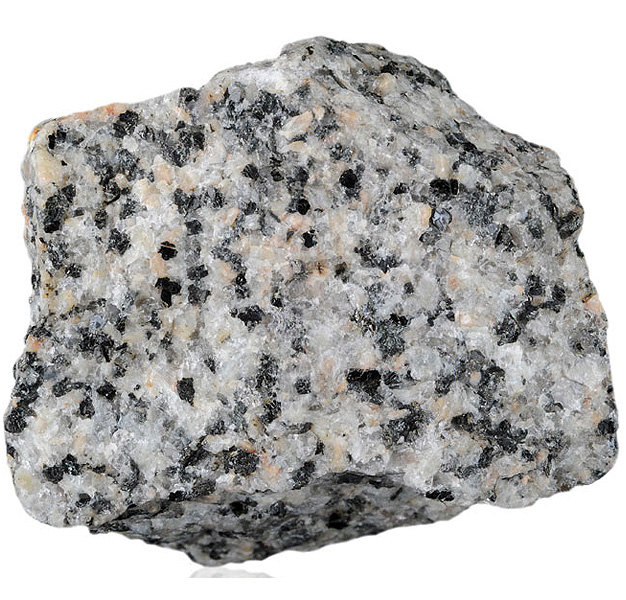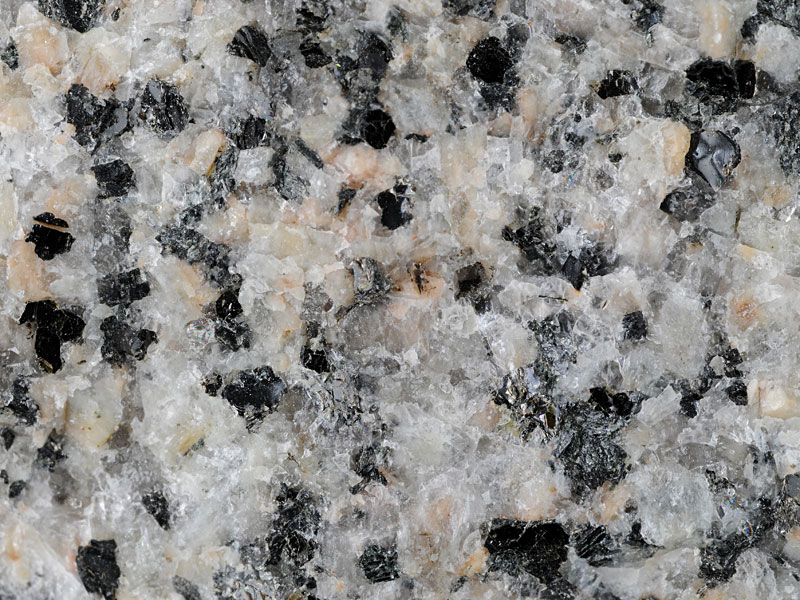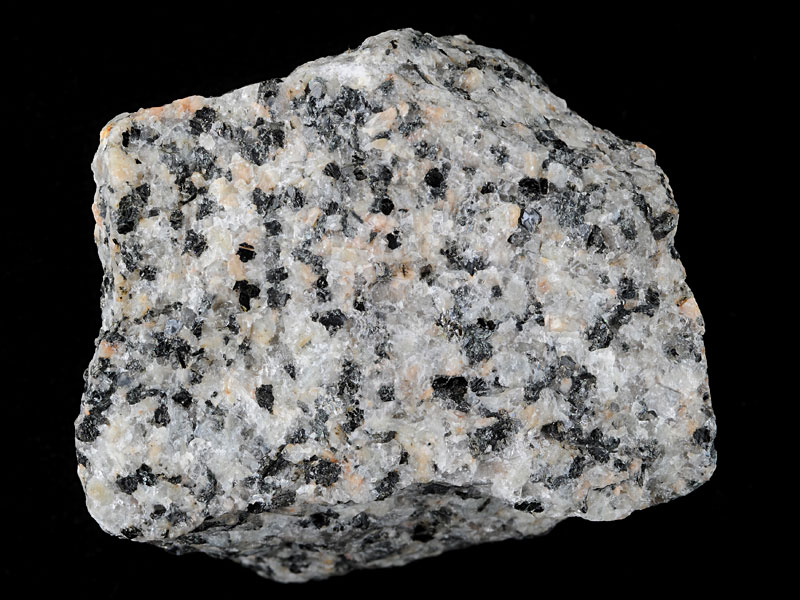
Fact sheet
This sample of granodiorite from the Loch Doon pluton in Dumfries & Galloway, Scotland formed around 408 million years ago during the Devonian period, late in the Caledonian orogeny. The late Caledonian Loch Doon granitic intrusion ranges in composition from hypersthene diorite at the margin, through quartz diorite, granodiorite and granite to cordierite microgranite at its core. The compositional variation observed in this intrusion indicates that two distinct magmas were involved, and variations were induced by crystallization. As a granodiorite it contains higher proportions of plagioclase feldspar than orthoclase and greater than 20% quartz.
In thin section the rock exhibits a course grained igneous texture including compositionally zoned plagioclase, together with minor amounts of microcline and quartz. The mafic minerals are dominated by biotite which is intergrown with pale green amphibole. Both biotite and amphibole are pleochroic although the amphibole is only weakly pleochroic. Accessory minerals include zircon which forms pleochroic halos in biotite, and apatite.
The United Kingdom Virtual Microscope (UKVM) collection consists of igneous, sedimentary and metamorphic rocks from around the UK.
It is intended as a teaching resource, helping to tell the story of the common rock types and how they form, and reflecting the history of the UK at the margins of the continent of Europe. The collection is a series of teaching sets, for example igneous rocks from the North Atlantic Igneous Province and SW England; high-temperature metamorphic rocks from Scotland and low-temperature metamorphic rocks from Wales; and sedimentary rocks, including English limestones and sandstones.








